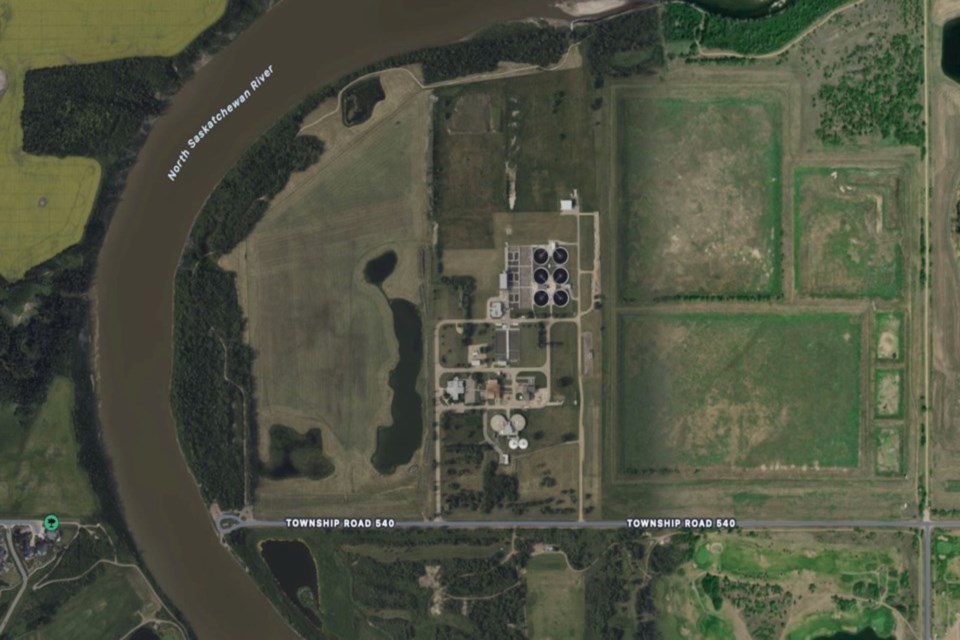The provincial government's 2024-25 budget and three-year capital plan provides ARROW Utilities, the Edmonton region's wastewater infrastructure authority, with $50 million to put toward a major plant expansion, as the company requested earlier this year.
ARROW Utilities is a non-profit company responsible for managing the wastewater (sewage) infrastructure in 13 municipalities throughout the region, including St. Albert. The company sets wastewater transmission rates, which are monthly charges included in property owner's utility bills based on every cubic metre of water used by residents and businesses.
St. Albert Coun. Ken MacKay, who serves as the board chair for ARROW Utilities, said in an interview the provincial funding will “play a tremendous role” in helping ARROW keep up with industrial and population growth in the region.
“The investment by the government is central for helping us succeed in our priorities as we move forward,” he said. “We put forward what we thought was a reasonable request through the government and we're very satisfied with the support that we've received.”
As the Gazette previously reported, ARROW Utilities finds itself facing a capital funding shortfall when it comes to a $166 million upgrade and expansion of its northeast Edmonton wastewater treatment plant. It is a project ARROW said is necessary to take on the wastewater created by major industrial producers such as Air Product's $1.6 billion hydrogen facility currently being built near Fort Saskatchewan, and to keep up with the region's overall population growth.
The $166 million plant expansion and upgrade quickly ballooned in cost — last April the company's CEO Kate Polkovsky wrote in an Edmonton Journal opinion column that the project would cost $100 million — and the cost itself is about $29 million more than the company's provincially regulated debt limit.
Once completed, the project will increase the plant's capacity, while also allowing ARROW Utilities to sell treated wastewater back to industrial users.
Last November ARROW's board approved a 19.4 per cent wastewater transmission rate increase for the 2024 year for residents and businesses throughout the region in an attempt to generate some capital funding.
At the time, the company was also projecting a decade of annual rate increases.
MacKay said that while no decisions have been made yet, it's possible the $50 million in provincial support may help stave off some substantial rate increases in the years to come.
“[ARROW Utilities] really only has debt and rates in relation to how we can actually finance our ongoing operations, whether it be capital or operating,” he said. “We'll have some very preliminary discussions in relation to what this will look like [at our next board meeting], but it's more likely the conversations will allow administration a little bit more time to look at some different options as it relates to those topics whether it's rate stabilization [or] whether it's some of the impacts in relation to our reserves.”
“We obviously had some plans, both contingency plans if we weren't going to be successful [with the provincial funding request] and also, obviously, plans if we were successful, but we're not ready to announce those yet.”
In emailed statements, both ARROW Utilities spokesperson Cindy de Bruijn, and Jesse Furber, the press secretary for Devin Dreeshen, the minister of transportation and economic corridors, said the provincial funding will support water resiliency in the region.
“ARROW Utilities is pleased to be able to partner with the Government of Alberta by playing a critical role in water resiliency and appreciates that this investment considers the affordability of Albertans,” said de Bruijn.
“This investment will help meet the needs of the region’s growing population and support the health and resiliency of the region’s water systems,” said Furber.
The $50 million in funding will be spread over three years, with the first instalment of $10 million being provided this year, followed by $10 million next year and then $30 million in 2026-27.




